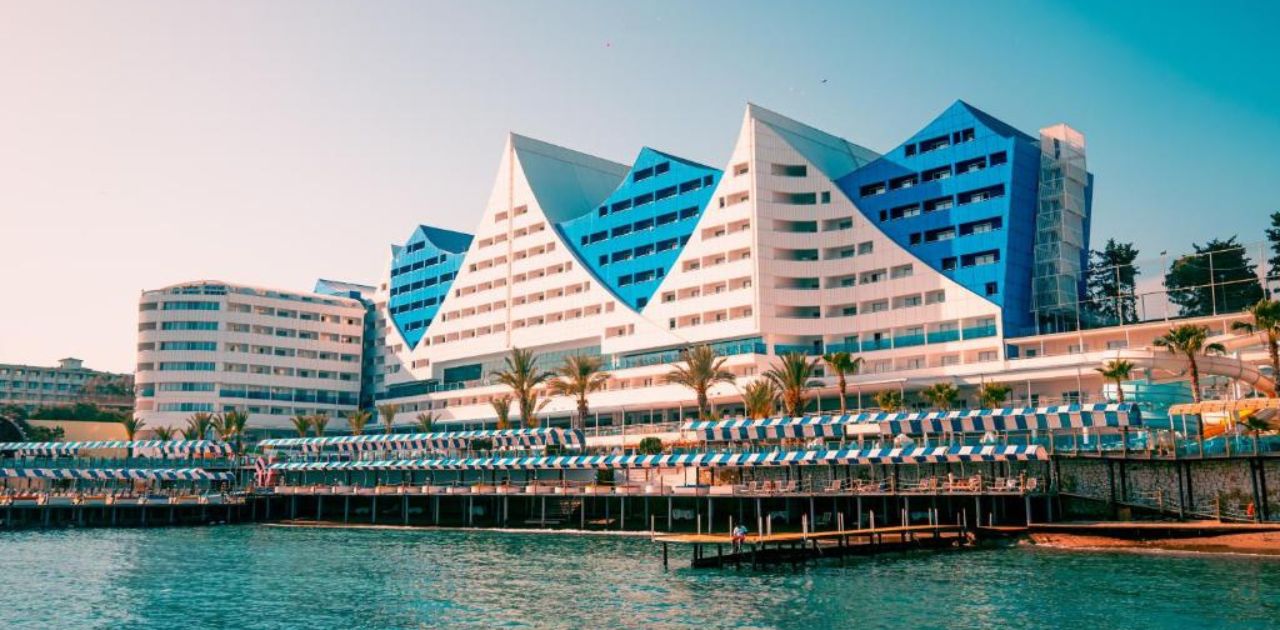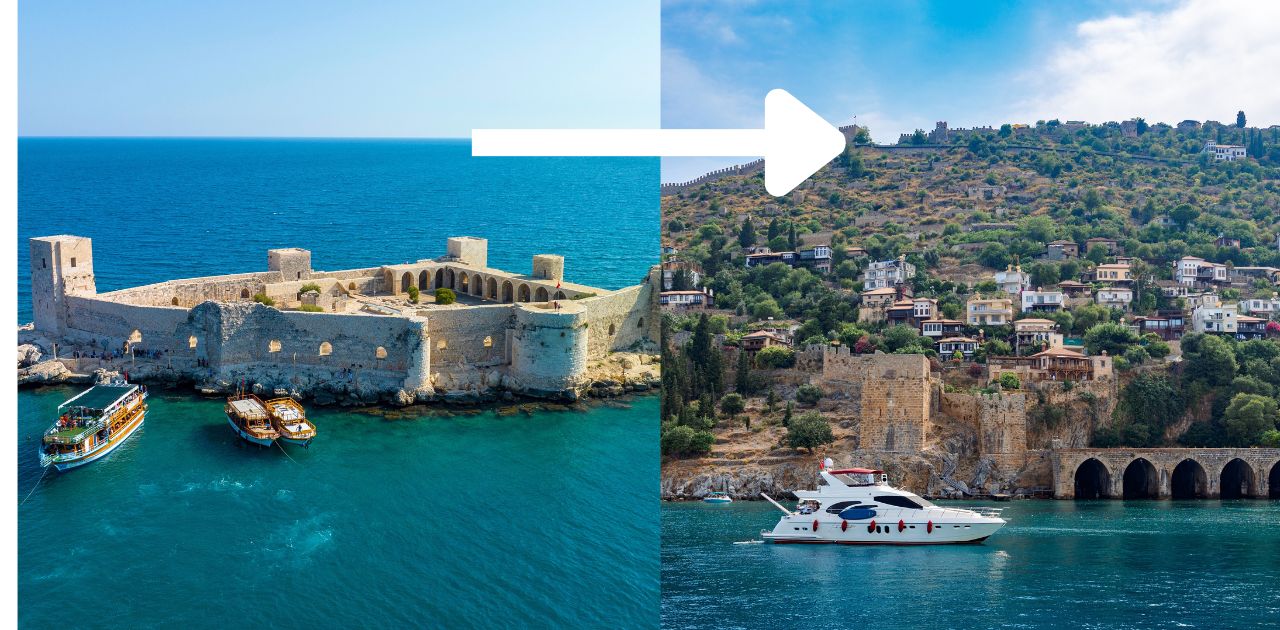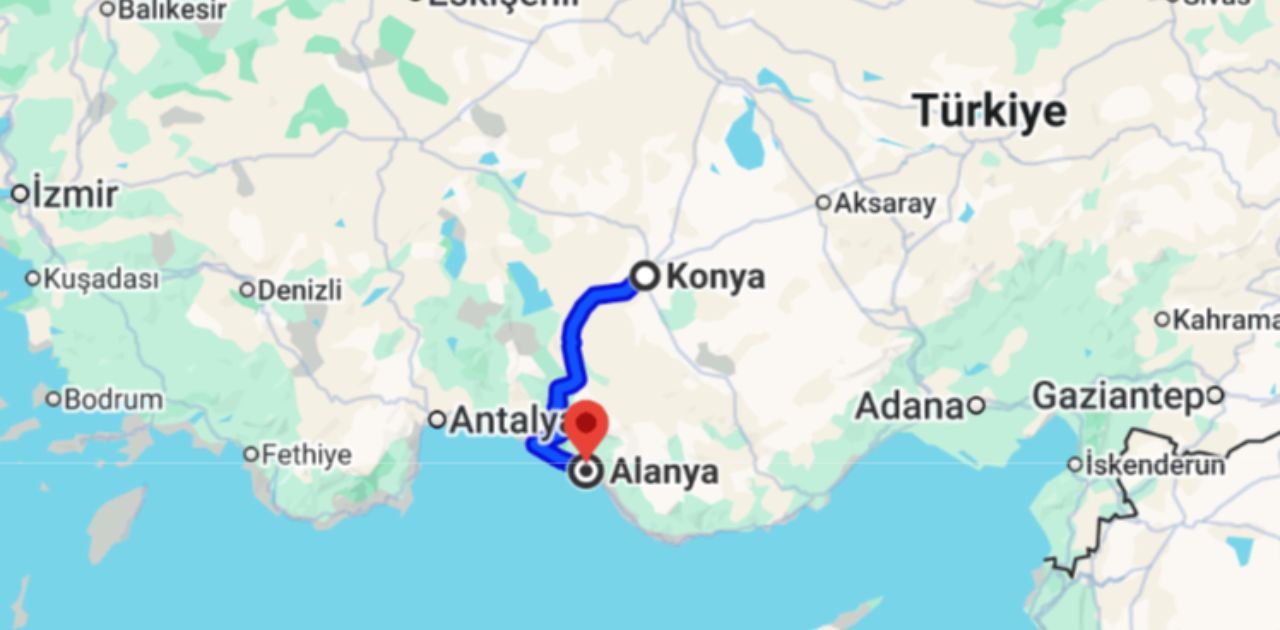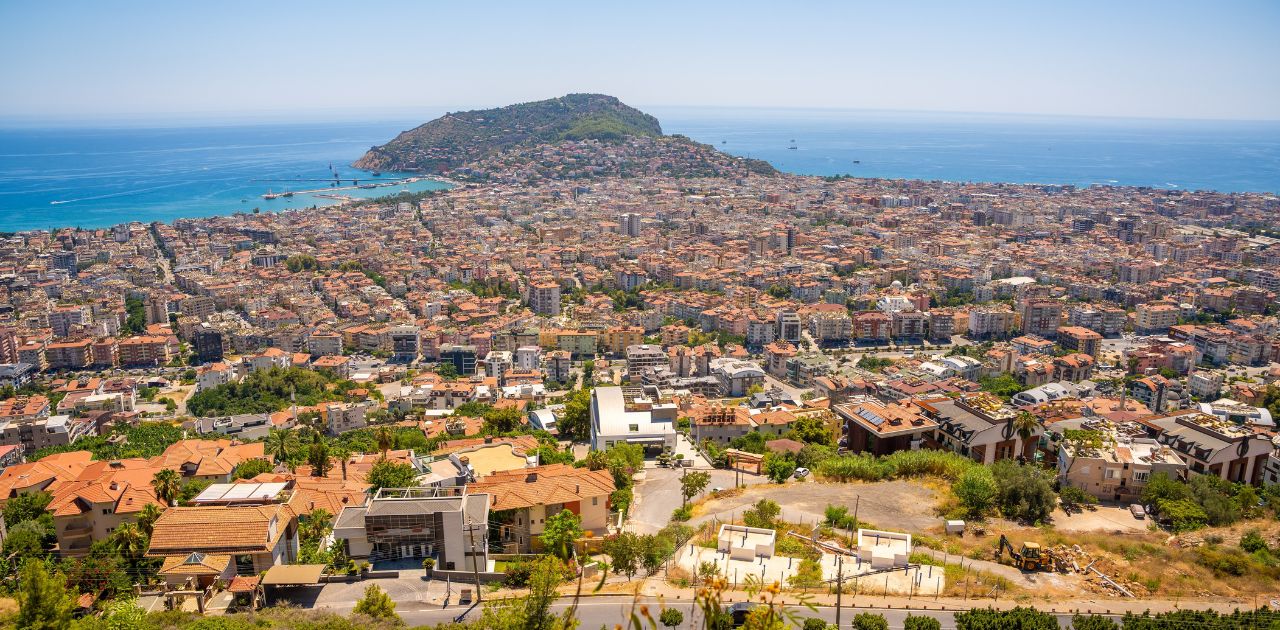Alanya is more than just sun-soaked beaches and turquoise waters. Beneath its coastal charm lies a rich and captivating history, marked by remarkable architecture, ancient traditions, and stories that date back centuries. If you’re drawn to the past and want to explore where time has left its mark, the historical attractions in Alanya offer an unforgettable window into Anatolia’s diverse heritage.
From hillside fortresses to sea-facing towers, every stone and structure in this city tells a tale. This guide highlights the most fascinating historical attractions in Alanya, giving you insight into what makes each site unique.
Why Alanya Is a Treasure Trove of History
Set between the sea and the Taurus Mountains, Alanya’s geography made it both a desirable stronghold and a target of conquest. This location enabled a mixture of influences—from Hellenistic to Byzantine to Ottoman—all of which shaped the town’s architecture and local traditions. Today, these influences are visible across historical attractions in Alanya that blend rugged nature with centuries-old stonework.
While walking through the old neighborhoods or up toward the hilltop citadel, it becomes clear that Alanya wasn’t built in a day. Structures here span several historical periods, with ancient ruins Alanya revealing everything from Roman bathhouses to Seljuk defensive walls. Each era left behind a signature style that remains intact thanks to consistent preservation.
Cliffs, caves, and narrow bays provided natural protection, allowing settlements to flourish without frequent destruction. This has given today’s visitors the rare chance to see complete sections of old walls, intact archways, and dwellings still rooted in their original foundations.
1. Alanya Castle: A Fortified Wonder Overlooking the Sea
No list of historical attractions in Alanya would be complete without mentioning Alanya Castle. Situated on a rocky peninsula 250 meters above sea level, the castle dominates the skyline with its massive walls and towers. The site dates back to the 13th century during the Seljuk period, although earlier Roman and Byzantine traces are also evident.
You can walk along the fortified walls and enjoy panoramic views of the Mediterranean. Along the way, you’ll encounter historical residences, cisterns, and chapels nestled within the ancient stonework. It’s a prime location for history enthusiasts looking to visualize life in medieval Anatolia.

2. Red Tower Alanya: Symbol of Seljuk Maritime Power
At the harbor entrance stands the impressive Red Tower Alanya—a monumental octagonal structure built in 1226. Named for the red bricks used in its upper parts, this tower once served as both a defense post and a naval warehouse.
Today, the tower functions as an ethnographic museum, where visitors can see artifacts and learn about the daily life of sailors, soldiers, and merchants. It’s an essential stop when exploring the historical attractions in Alanya as it connects maritime activity with military architecture.

3. Damlataş Cave: Nature Meets History
Tucked beneath Alanya Castle, Damlataş Cave is renowned not just for its geological beauty but also for its cultural significance. Discovered in 1948 during the construction of the harbor, this cave features stalactites and stalagmites formed over 15,000 years.
Although not man-made, it’s closely tied to the history of the region and is one of the most frequently visited historical attractions in Alanya. Its humidity and mineral-rich air were historically believed to help with respiratory issues, attracting health-seeking visitors even before it became a tourist spot.

4. The Shipyard (Tersane): Where Warships Were Forged
Just a short walk from the Red Tower Alanya, the Alanya Shipyard (Tersane) represents the city’s shipbuilding past. This Seljuk-era dockyard, built in 1228, includes five arched docks where wooden warships were once constructed and repaired.
The shipyard is the only remaining Seljuk shipyard in Turkey and showcases medieval craftsmanship at its peak. Its strategic position near the harbor also helped protect the coastline, playing a vital role in regional defense during the 13th century.

5. Alanya Old Town: Strolling Through Time
Wandering through the Alanya old town is like stepping back into another era. This part of the city is filled with traditional Ottoman houses, cobbled streets, and quaint tea shops that whisper stories of the past.
Each corner of Alanya old town invites curiosity—whether it’s a hidden mosque, an old bathhouse, or a wooden balcony overflowing with flowers. For those interested in architecture, culture, and the everyday life of bygone times, this district offers layers of depth.

6. Ancient Ruins of Syedra: City on a Cliff
Located about 20 kilometers from the city center, the ancient ruins Alanya at Syedra offer a peaceful but powerful look into Roman-era urban life. Positioned on a high plateau with stunning views of the sea, the ruins include city walls, a colonnaded street, cisterns, a theater, and bath complexes.
These ancient ruins Alanya are a lesser-known treasure among historical attractions in Alanya, perfect for those who enjoy exploring without the crowds. The site offers context about how people lived, worked, and worshipped during ancient times.

7. Süleymaniye Mosque: Faith and Architecture
Situated inside the walls of Alanya Castle, Süleymaniye Mosque stands as a spiritual anchor in the region’s long history. Originally built during the Seljuk period and later rebuilt in the 16th century under the Ottomans, this mosque features a simple yet elegant design.
Its wooden ceiling and wide interior reflect classical Turkish-Islamic architecture. The surrounding courtyard offers a peaceful spot to rest while soaking in views of the sea and the city below.

8. Atatürk House Museum: Glimpse into Modern Turkish History
While most historical attractions in Alanya date back centuries, the Atatürk House Museum offers a more recent yet equally important slice of history. The museum is housed in a restored Ottoman-style building where Mustafa Kemal Atatürk, the founder of modern Turkey, once stayed.
Inside, you’ll find original furniture, personal items, and photographs that tell the story of his visits to Alanya and the national changes taking place during that time.

9. Byzantine Church of Alanya Castle: Spiritual Traces of the Past
Inside the boundaries of Alanya Castle, you’ll find the remnants of a small Byzantine church. Though partially ruined, the frescoes, stone walls, and arched ceilings still reflect the religious traditions that once thrived in the region. The church dates back to the early Christian period and served the castle’s residents for worship and gatherings.
Walking through its remains, visitors often reflect on the spiritual and cultural shifts Alanya has witnessed over time. The location, nestled within the fortress and surrounded by thick walls, enhances the sense of isolation and reverence that once defined this sacred space.

10. The Alanya Archaeological Museum: Unearthing Centuries of History
A short walk from the city center brings you to a museum filled with artifacts from multiple civilizations that once inhabited this part of Turkey. The Alanya Archaeological Museum is a central hub for understanding the timeline of the region, from prehistoric times through the Byzantine and Ottoman eras.
Among the notable exhibits are bronze statues, coin collections, ancient jewelry, and everyday tools found during excavations. These displays enrich the context for the many historical attractions in Alanya, especially for those interested in archaeology and ancient craftsmanship.

11. Seljuk Bathhouse: A Glimpse of Medieval Daily Life
Located near the harbor area, the old Seljuk bathhouse offers a rare view into the public hygiene and social rituals of the medieval era. Though smaller than modern bathhouses, its preserved sections—such as the warm room, hot room, and cold room—still reflect how these spaces functioned centuries ago.
This site contributes to the overall tapestry of historical attractions in Alanya, representing not just military and religious life, but also personal and community care traditions that have been passed down through generations.

12. Alara Castle: A Defensive Stronghold Outside the City
For those willing to travel a bit outside the city, Alara Castle is an excellent addition to your historical tour. Located along the Alara River about 35 kilometers from Alanya, the fortress was built to protect trade routes and caravans moving between Anatolia and the Mediterranean.
The steep climb to the top rewards you with views of the river valley and plains, showing why this site was a key military vantage point. The castle also includes underground tunnels and storage rooms, reflecting the strategic foresight of its builders.

13. Ehmedek Fortress: Watchtower of the Inner Citadel
Often overshadowed by the main castle, Ehmedek Fortress served as a second line of defense in the upper part of Alanya Castle. Its name is believed to come from the commander Ahmedek, who oversaw its construction during the Seljuk era.
The fortress was designed to shield the inner sections of the castle and house a smaller garrison. The structure consists of thick walls, turrets, and a maze-like layout that made it difficult for intruders to penetrate. Visiting Ehmedek is a great way to appreciate the layered defenses and architectural planning that define the historical attractions in Alanya.

14. Andızlı Mosque: A Hidden Gem in the Castle’s Lower Quarter
Not far from the inner walls of the fortress lies Andızlı Mosque, one of the lesser-known religious sites in the area. This small structure features a stone minaret and wooden roof, reflecting the modest design commonly used in the Ottoman period.
The mosque is still used for prayers today, maintaining a quiet dignity among the more heavily visited sites. Its continued relevance adds a living element to your historical tour.

15. Ottoman Houses in Tevfik Hoca Street: Living History
Tevfik Hoca Street is located within Alanya old town and is lined with beautifully preserved Ottoman-era homes. These houses often feature carved wooden balconies, interior courtyards, and stone foundations. Many have been restored to reflect their original charm, with some converted into small cafes, shops, and boutique hotels.
Exploring these homes offers a deeper connection to the daily lives of people who lived in Alanya during the Ottoman period. For architecture lovers, this street is one of the more immersive historical attractions in Alanya.

16. Bedesten: The Historic Marketplace of Alanya
The Bedesten, or covered bazaar, once served as the primary market in the city during the Ottoman rule. Though it is now surrounded by modern shops, the original stone structure still exists and is easy to spot due to its traditional arches and columns.
Markets were not just centers of trade; they were also places of social interaction, cultural exchange, and economic growth. The Bedesten represents how commerce played a central role in Alanya’s development, adding depth to the idea of what constitutes historical significance.

Tips for Visiting Historical Attractions in Alanya
Exploring Alanya’s rich history is an unforgettable experience, but a few practical tips can make your trip smoother and more rewarding:
- Start Early: Many historical sites like Alanya Castle and the Red Tower are best explored in the morning before it gets too hot.
- Wear Comfortable Shoes: Ancient ruins and old pathways can be uneven or steep, so sturdy walking shoes are a must.
- Bring Water and Sunscreen: Most of the sites are outdoors and under direct sun, especially during summer.
- Hire a Local Guide: A knowledgeable guide can enrich your visit with stories and historical context that signs might not cover.
- Combine Sites Nearby: Plan your route to see nearby attractions together (e.g., Alanya Castle, Red Tower, and Tersane in one trip).
- Respect the Sites: Many places are protected heritage zones. Avoid climbing on ruins or touching sensitive artifacts.
Final Thoughts: Why Historical Attractions in Alanya Deserve Your Attention
Whether you’re walking along fortress walls, stepping into the cool air of Damlataş Cave, or standing in the shadow of the Red Tower Alanya, there’s something deeply human about engaging with the historical attractions in Alanya. They connect you to the thousands of people who lived, worked, built, and prayed here, each leaving a piece of their story behind.
These sites are not just monuments. They are storytellers, guardians of memory, and mirrors into the everyday life of ancient civilizations. From the bustling quarters of Alanya old town to the remote corners where ancient ruins Alanya rest quietly, every corner offers a lesson, a mystery, or a moment of reflection.
So if you’re planning a trip to Turkey and your interest lies in more than just beaches, this city will not disappoint. The city’s depth goes well beyond sun and sand—it offers a walk through time.




